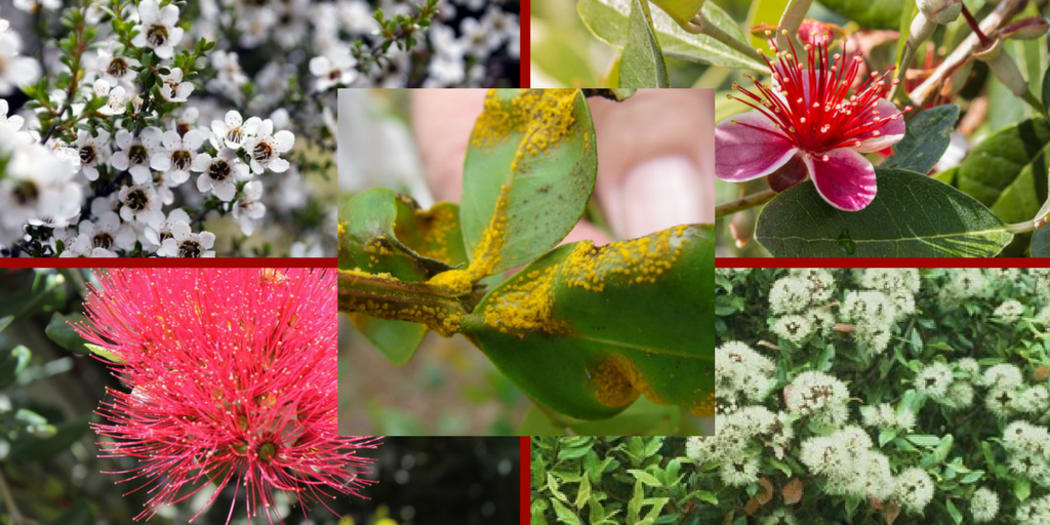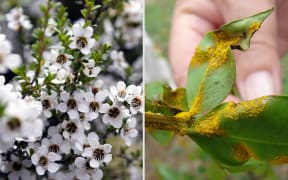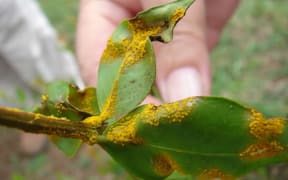A huge swathe of north Taranaki is under a ban to control the movement of plants affected by myrtle rust infection.

Photo: RNZ/ Supplied
The controlled area stretches from the southwestern boundary of New Plymouth to beyond Urenui in the north, and inland well beyond Inglewood in the south east.
The affected area is approximately 820 km². The total land area of all Taranaki is 7258 km².
People cannot move material from plants such as fejoia or pohutukawa outside the controlled area.
Incident controller David Yard said the zone extended out 10 kilometres from every one of the 54 known infections in the region.
"It makes it now illegal to move and plants or trees that are part of the myrtle family, and any garden waste, fruit or pruning from those plants out of the area."
Mr Yard said during the cold winter months, myrtle rust symptoms were suppressed and it was proving difficult to get an idea of the scale of the outbreak.
"So we're hoping by restricting the movement of potentially infected material out of the area we can try and contain the disease in the northern part of Taranaki.
"We could be dealing with an extensive outbreak, but there remains some possibility we may only have a small level of infection that could ultimately be eradicated."
Mr Yard was unable to say exactly how large controlled zone was but said Taranaki residents could go to MPI website and enter their address into an interactive map which would tell them if they were in the affected area or not.
Signs would be going up on roads heading into the controlled zone warning people about the ban and residents were encouraged to dispose of Myrtle waste safely at transfer stations and landfills within the controlled zone.
Myrtle family plants could still be bought and planted within the zone despite the ban.
There were no restrictions on plant movements or planting in other areas of New Zealand.
Mr Yard said Taranaki was the focus of the effort, even though myrtle rust had been found in other regions.
Two small Northland and Te Kuiti infections had been managed and there had been no further sign of the disease in those areas, he said.
The rust had also been found on a small number of properties in Te Puke in the Bay of Plenty and work was still underway to determine the scale of the situation there.



